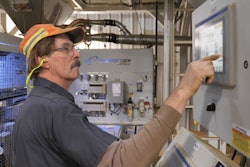
As the September 2020 expiration of the Fixing America’s Surface Transportation Act approaches, Congress is examining the needs of American highways and public transportation systems.
While the FAST Act has provided an additional $70 billion in general funds transferred to the Highway Trust Fund, Congress must still address the fundamental revenue shortcomings within the Fund.
Further degradation of the country’s highways and bridges threatens our nation’s economic standing in the world and endangers the livelihood of farmers and ranchers. Maintaining adequate funding for the nation’s highway system must be a priority to ensure food and other farm goods can be moved safely and efficiently to consumers.
This Market Intel focuses on the solvency issues surrounding the Highway Trust Fund as well as how the COVID-19 emergency has deepened the projected funding shortfall.
Background
The U.S. highway system is funded through two primary federal sources, the Fixing America’s Surface Transportation Act and the Highway Trust Fund. With a focus on highway safety and structural highway programs, the FAST Act authorizes $305 billion over fiscal years 2016 through 2020. Federal funds are distributed to states using a formula based on how individual states may benefit from federal highway assistance relative to other states.
The HTF funds all federal highway programs, as well as 80% of public transportation programs, with fuel, truck and tire taxes. Last raised in 1993, the excise tax on fuel – 18.4 cents per gallon on gasoline and ethanol blended fuels, and 24.4 cents per gallon on diesel fuel – accounts for about 90% of the HTF. For perspective, if the motor fuel tax were adjusted to 2020 values using the consumer price index, the excise tax would be 32 cents per gallon on gasoline and ethanol blended fuels and 43 cents per gallon on diesel.
Both federal funding streams directly contribute to the construction, design and planning of the nation’s highway system. According to the American Road and Transportation Builders Association, states leveraged $30.8 billion in federal funds to advance $66.5 billion in highway improvement projects in 2018. Using Freedom of Information Act data from the Federal Highway Administration, 45% of federally funded projects in 2018 were for reconstruction and repair. Only 22% of the funds were utilized for capacity-building projects. Figure 1 illustrates the value of highway and bridge projects when major work began from 1980 to 2018.

Deepening the Shortfall
While increases in fuel consumption since 1993 had been maintaining the HTF, in the years following the recession in 2007, a greater propensity for fuel efficiency has stymied the revenue growth of the HTF, leading to consistent overspending.
Based on the Congressional Budget Office’s latest baseline and trends, the HTF will begin realizing cumulative shortfalls in 2022, resulting in up to a $135-billion deficit in the highway account by 2030, Figure 2.

When the HTF was conceived, annual vehicle miles traveled, and therefore motor fuel tax revenues, were rising rapidly. However, this is no longer the case. Every year since the 2007 recession, the dedicated tax revenues flowing into the HTF have fallen short of the surface transportation spending Congress has authorized. The Federal Highway Administration projects that vehicle miles traveled will grow at roughly 1.1% per year over the next 20 years, leading to less tax revenue going into the HTF.
Compounding the issue, the COVID-19 emergency and stay-at-home orders have slowed travel this spring, deepening the projected HTF revenue shortfall. According to the U.S. Department of Transportation, travel on all roads and streets was down 41.2%, or 112 billion vehicle miles, in April and 27.2%, or 60 billion vehicle miles in March. So far, cumulative travel for 2020 has declined 14.8%, or 152.3 billion vehicle miles.
While fuel demand has increased slightly in the past few weeks as parts of the country have begun to reopen, the decrease in fuel demand due to the COVID-19 emergency may have longer lasting effects. The U.S. Energy Information Administration projects that U.S. liquid fuel consumption will average 15.7 million b/d in the second quarter of 2020, a 23%, or 4.6 million b/d, decrease from the same period in 2019. Figure 3 illustrates monthly U.S. gasoline retail sales by refiners through March 2020.

Policy in Progress
Major infrastructure legislation has been top of mind in both chambers of Congress. In the House, the Moving Forward Act (H.R.2) was passed through committee along party lines and is slated for floor action next week. The broad infrastructure bill would invest more than $1.5 trillion in rebuilding American infrastructure, including roads, bridges, transit systems, schools, housing and broadband access. While the proposed legislation does not address the solvency issues of the HTF, the authorization of a $1.5 trillion transfer from the general fund would more than cover the scope of the legislation.
In the Senate, the Environment and Public Works Committee approved the America’s Transportation Infrastructure Act of 2019 (S. 2302) last July. The Senate bill would provide an average of $57.5 billion annually from the HTF from fiscal year 2021 through fiscal year 2025. The five-year $287 billion in HTF contract authority represents a 27% increase over the five-year funding set forth in the FAST Act. S. 2302 also doesn’t have a funding mechanism to make up for loss HTF revenue and has additional committee stops before heading to the Senate floor.
Summary
U.S. agriculture depends on a safe and reliable national surface transportation system to carry food, fiber and renewable energy products to all corners of the nation. The U.S. highway system must be adequately funded to not only address the repair issues on our roads but also to build capacity for safer transportation.
The HTF is projected to become insolvent beginning in 2022, with a balance deficit of over $6 billion. The projected shortfall has deepened over the past few months due to nationwide travel restrictions and stay-at-home orders stemming from the COVID-19 emergency. To keep pace and recover from the pending funding shortfall of the HTF, a long-term commitment to prioritize and invest in our aging infrastructure is essential to the overall health of the agriculture industry.
Contact:
Megan Nelson, Economic Analyst
(202) 406-3629









